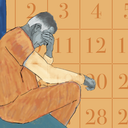For Inclusion on DPI’s Innocence List:
Defendants must have been convicted, sentenced to death and subsequently either-
- Been acquitted of all charges related to the crime that placed them on death row, or
- Had all charges related to the crime that placed them on death row dismissed by the prosecution or the courts, or
- Been granted a complete pardon based on evidence of innocence.
The list includes cases in which the release occurred 1973 or later.
For a fuller description of the criteria used in this list and the reasons why these criteria were chosen, see Section V of DPI’s 2004 Innocence Report. See also an excerpt below from an article in the Baltimore Sun by Dan Rodricks regarding the use of the term “exonerated.”
Use of the term “exonerated”: Columnist Dan Rodricks of the Baltimore Sun asked DPI about its list of exonerated individuals. DPI’s then-Executive Director Richard Dieter responded, and that response was reprinted in Mr. Rodricks’ column, July 5, 2009:
With respect to your question about our list of exonerated individuals, we use very strict and objective criteria for inclusion of cases on this list. Basically, the list is determined by the decisions of courts and prosecutor offices, not by our subjective judgment. As we state in a number of places on our Web site and in our reports, the criteria for inclusion on the list is:
Defendants must have been convicted, sentenced to death and subsequently either- a) their conviction was overturned AND
i) they were acquitted at re-trial or
ii) all charges were dropped
b) they were given an absolute pardon by the governor based on new evidence of innocence.
The list includes cases where the release occurred in 1973 or later, which was the time that states resumed sentencing people to death after the U.S. Supreme Court had struck down the death penalty. The list originated from a request from Congress asking us to identify the risks that innocent people might be executed. The original list that we prepared was published as a Staff Report of the House Subcommittee on Civil and Constitutional Rights. The list has been favorably referred to by Justices of the U.S. Supreme Court and other federal courts, as well as by many public officials around the country.
We believe the term “exonerated” is entirely appropriate to refer to the individuals on this list, which now numbers [159] individuals. Exonerate means to clear, as of an accusation, and seems to come from the Latin “ex” and “onus” meaning to unburden. That is precisely what has occurred in these cases. The defendants were convicted, given a burden of guilt, and then that burden was lifted when they were acquitted at a re-trial or the prosecution dropped all charges after the conviction was reversed. These are not individuals who received a lesser sentence or who remained guilty of a lesser charge related to the same set of circumstances. All guilt was lifted by the same system that had imposed it in the first place. Our justice system is the only objective source for making such a determination.
This notion of innocence, that an individual is innocent unless proven guilty, is a bedrock principle of our constitution and our societal protection against abusive state power. One does not lose the status of innocence merely because a prosecutor or other individuals retain a suspicion of guilt. Of course, it is true that this list makes no god-like determination of knowing exactly what happened in the original crime. Such perfect knowledge of past events is impossible, either to absolutely prove that a person did or did not do an act. We do not try to make a subjective judgment of what we think happened in the crime. We are merely reporting that in a great many cases the justice system convicted an individual and sentenced them to death, but when the process that arrived at that conclusion was reviewed, the conviction and sentence were thrown out. The individual, who often came close to execution, could not even be convicted of a traffic violation. Surely, that should be a cause of concern in applying the death penalty.


